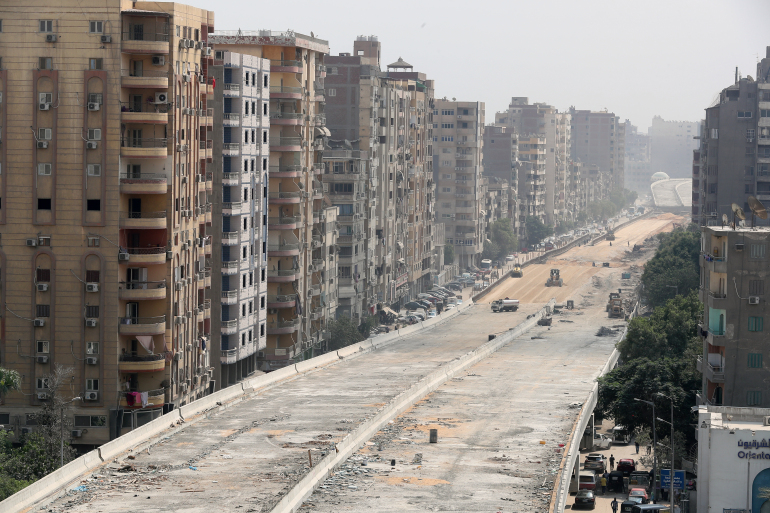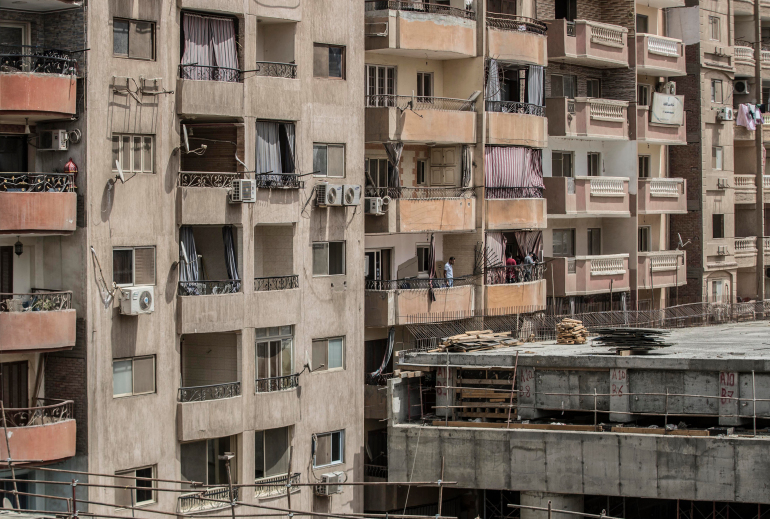Public outrage is on the rise in Egypt over plans for a new tourist attraction in the heart of the capital, Cairo, amid a government-led construction drive that opponents say threatens the city’s cultural heritage.
Last month, Cairo’s Governor Khaled Abdel Aal launched the Cairo Eye project – a 120-metre high Ferris wheel to be completed by 2022 along the River Nile in Zamalek, an upscale district on Gezira Island in the heart of the capital.
Spanning 20,000 square metres (215,000 square feet), the Cairo Eye promises visitors a panoramic view of the ancient city from what will be Africa’s largest observation wheel, according to the governor.
In line with Egypt’s Vision 2030 for sustainable development, the project will feature ancillary services including restaurants, cafes and a parking area. It also plans a 6km (3-mile) public walkway along the Nile.
Despite the government’s flashy promises, the project’s launch has triggered a public outcry among residents, parliamentarians and even former ministers.
Mounir Abdelnour, who served as a former minister of tourism and investment, described the plan as “catastrophic” and questioned its efficiency, and asked whether it had taken citizens’ concerns about the environment and area’s heritage into account.
“What right does Cairo’s governor have to use this historic, green space and to grant it to a private company?” he asked on Twitter, referring to reports the ferris wheel would be built in Zamalek’s historic Masalla Gardens.
Deep discontent
Zamalek residents have raised concerns over the project’s potential impact on the already-crowded district and its infrastructure.
The once-leafy island Zamalek is on houses Cairo’s Opera House, the iconic Cairo Tower, historic palaces and mansions, as well as the Gezira Sporting Club and many foreign embassies and hotels.
“The island is already on the verge of collapse because of the metro being built despite our opposition,” said Zamalek resident Shady Taha, referring to tunnels being drilled to make way for Cairo’s third metro line.
“The government is always looking for shiny new projects that might bring tourists, but it ignores that a project like this can destroy the island’s infrastructure and worsen the traffic,” said Taha, whose name was changed to protect against official reprisals.
“If the project was based on proper research and transparency, it might have been slightly acceptable, but it wasn’t,” he explained, adding the government “constantly” makes plans without consulting residents.
Cairo’s governor told Egyptian media during the launch on January 21 that Zamalek was carefully chosen as a strategic location for the project.
He said the 500-million Egyptian pound ($3.17m) investment would boost tourism by attracting 2.5 million visitors a year, as officials hope to revive Egypt’s tourism industry, hit hard by unrest since the Arab Spring uprising in 2011 and the coronavirus pandemic.
Cairo Eye, Africa’s tallest observation wheel will open in Egypt in 2022. It will be 120 meters high. pic.twitter.com/tWh0DuvRrY
— Africa Facts Zone (@AfricaFactsZone) February 5, 2021
According to Alia Abdou, a Zamalek resident and founder of Zamalek Community, a Facebook page she set up for the island’s community, most of her followers oppose the project.
“It’s mainly for environmental reasons [that they oppose it]. Many residents think the project will cause pollution, traffic jams, and overcrowding.
“They also feel that a modern project like this shouldn’t be located in a historic district such as Zamalek,” said Abdou.
‘Protected and maintained’
Earlier this month, the head of the Egyptian parliament’s tourism committee, Nora Ali, called on the minister of tourism, Khaled al-Anani, to consider moving the Cairo Eye to the new administrative capital – a multibillion-dollar mega-city being established east of the metropolis. Her calls echoed those of parliamentarian Shaima Halawa who filed a formal request.
Likewise, Egypt’s former foreign minister Amr Moussa opposed the project, saying in a Facebook post a “historic green area” such as Zamalek “should be protected and maintained.”
Responding to criticism during a February 4 parliament session, al-Anani said the ministry of tourism “has nothing to do with the project” as it does not fall within its remit.
“I attended the launch because I was invited by the state,” Egyptian media quoted al-Anani as saying. “If the project is presented to the ministry, I will not authorise it.”
According to WJ Dorman, who is affiliated with the University of Edinburgh and an expert on Egypt’s urban politics, the Cairo Eye is an example of a “spectacular initiative intended to create the impression of vibrancy or dynamism in the built environment and, in so doing, distract attention from shortcomings of governance and everyday urban life”.
In a 2019 report, the World Bank said 60 percent of Egyptians were “either poor or vulnerable”, up from a national poverty rate close to 30 percent in 2015. More than 40 percent of the country’s population lives in urban areas.
Alarm in Heliopolis, too
Opposition to the Cairo Eye project comes amid a wider discussion on a government-led road-building drive that some say may erase Cairo’s heritage.
Reports this month about an alleged plan to construct an overpass in Heliopolis, an eastern suburb of Cairo, passing over a century-old cathedral – known as the Basilica – alarmed many residents.
The Heliopolis Heritage Initiative Facebook page, which first reported efforts to build the bridge in December last year, said its members were told at a meeting with the engineering committee last week the project was being re-examined to present alternatives.
Fearing the project might ruin the historic landmark, many have since signed a petition against the construction of the flyover, while others have lobbied officials to support their calls.
For Heliopolis residents, the reported plans are alarming. Over the past few years, green spaces and parks across the suburb have been paved over to make way for new roads and flyovers.
To ridicule the reported project, digitally altered images showing new flyovers straddling the minarets of the Cairo Citadel and others piercing the Giza Pyramids circulated social media last week.
 A section of the newly constructed Teraat al-Zomor bridge at al-Omraniya district in Giza, Egypt [File: Khaled Elfiqi/EPA]
A section of the newly constructed Teraat al-Zomor bridge at al-Omraniya district in Giza, Egypt [File: Khaled Elfiqi/EPA]Expressway frenzy
Since President Abdel Fatah el-Sisi came to power in 2013, Egypt has built many expansive new bridges and roads to help ease traffic congestion and connect the sprawling Cairo metropolis to the new administrative capital.
In August last year, Egypt’s Minister of Transport Kamel al-Wazir said 130 billion Egyptian pounds ($8.3bn) had been allocated to building 1,000 bridges and tunnels by 2024, according to the Economist. He said 600 were already completed.
Plans for a new highway through Cairo’s City of the Dead, an ancient burial site listed by the UNESCO as a heritage site, threatens to uproot historic graveyards, while another in Giza poses a grave risk to the Pyramids, according to opponents of the plan.
People have also lambasted the government’s road-building drive for lacking proper planning.
A flyover built in Giza last year runs so close to adjacent apartment buildings that residents can reach out to touch it from their balconies. The Ministry of Housing said the buildings were built without proper licensing and had demolition orders issued against them.
مصر 2030 pic.twitter.com/naIunh3eC3
— Magdy Kamel (@magdymohamed_) February 5, 2021
Still, for some, el-Sisi’s construction drive has brought a positive change.
“I’m not sure why people are so upset about the new bridges,” said Ahmed Reda, a 33-year-old business owner in Cairo.
“All they’ve done is cut down travel time and reduce traffic jams, especially in east Cairo. The roads are better and quicker,” said Reda.
But to Dorman, the urban politics analyst, whether it is the Cairo Eye or road-building, such “national projects” are not about governance.
They are a means of “asserting state sovereignty over social space”, reinvigorating its power, and providing it with a “sense of mission and purpose”, in a theatrical rather than actual sense, said Dorman.
 The King Salman overpass while under construction in the Omraniya district of Giza [File: Khaled Desouki/AFP]
The King Salman overpass while under construction in the Omraniya district of Giza [File: Khaled Desouki/AFP]





